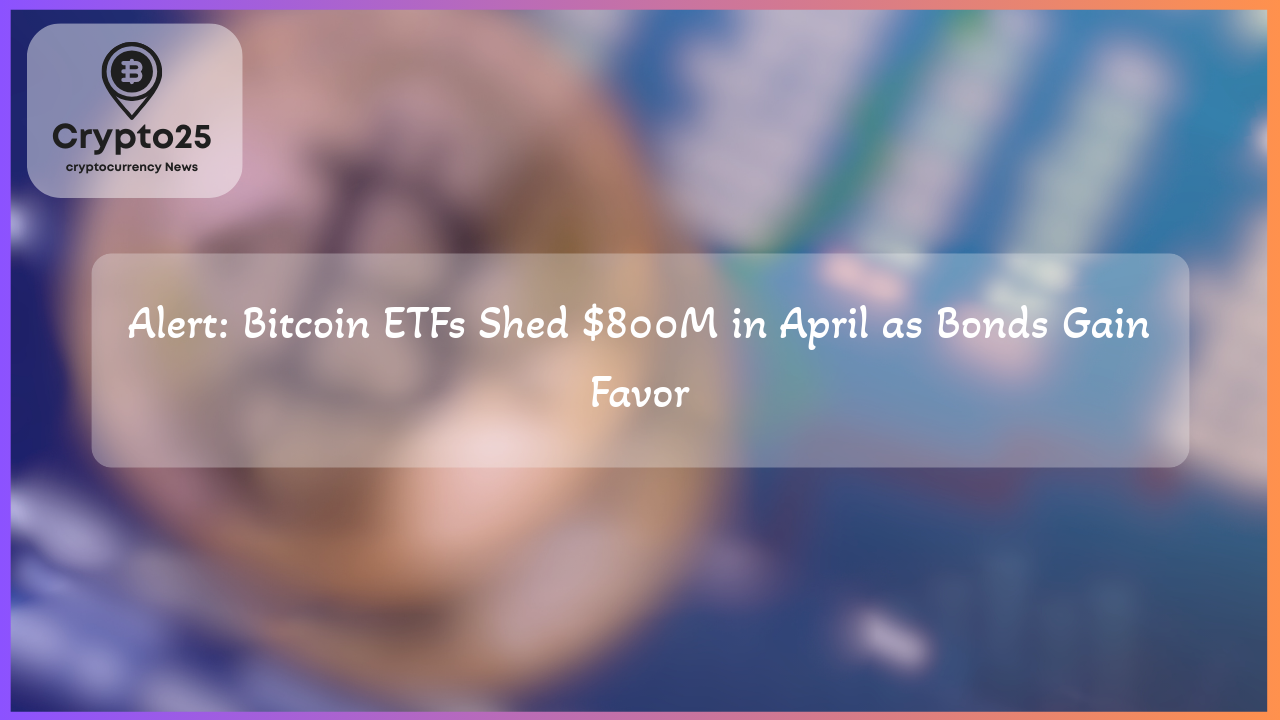
The global financial landscape continues to weather shifts in investor sentiment, particularly as traditional assets like U.S. Treasury bills and cryptocurrencies such as Bitcoin compete for institutional attention. While crypto enthusiasts advocate for a move away from dollar-dominated systems, institutional behavior suggests a more cautious approach. Understanding the dynamics between traditional finance and digital assets highlights the broader uncertainty impacting global markets today.
### Bitcoin ETFs and Institutional Activity: A Tumultuous Relationship
Institutional activity in cryptocurrencies often reflects broader market trends, and data from U.S.-listed spot Bitcoin ETFs sheds light on this sentiment shift. Despite narratives encouraging investors to “sell bonds, buy Bitcoin,” these financial instruments have experienced significant outflows recently. As of this week, cumulative monthly withdrawals from Bitcoin ETFs surpassed $800 million, marking the second-highest outflow since February’s stark $3.56 billion exodus. March also saw heavy outflows totaling $767 million, underscoring a widespread hesitation by institutions to embrace Bitcoin as a primary investment vehicle amid economic uncertainty.
This trend signals that institutional investors might not fully align with crypto advocates’ vision of Bitcoin replacing traditional instruments. Instead, many are favoring safer, more liquid, dollar-backed options like U.S. Treasury bills. These outflows align with broader market trends where investors are seeking stability in times of rising uncertainty.
### U.S. Treasury Bills: The Safe Haven of Choice
Investor demand for U.S. Treasury bills remains robust, highlighting the enduring appeal of government-backed assets in uncertain economic conditions. On Monday, newly auctioned three-month Treasury bills attracted strong institutional interest. The U.S. Treasury sold $80 billion in three-month bills with an interest rate of 4.225%, reflecting a slight rise from the previous week’s 4.175%. A similar surge was observed for six-month bills, which saw $68 billion in sales at 4.06%, marginally higher than prior auctions.
The bid-to-cover ratio, a critical measure of demand relative to supply, further underscores the popularity of these instruments. For three-month bills, the ratio rose to 2.96, indicating nearly three bids for every bill offered. Six-month bill demand showed a similar trend, with a ratio increasing to 2.90. The high liquidity and perceived low risk of U.S. Treasury bills make them an attractive choice for institutions, particularly when economic outlooks remain uncertain or volatile.
| Title | Details |
|---|---|
| Market Cap | $1.2 Trillion |
These instruments are often preferred as collateral in the repo market, where institutions use them to secure short-term funding. The strong uptake of T-bills signals institutional demand for flexibility, further the case against locking capital into risk-heavy or volatile assets like cryptocurrencies.
### Economic Uncertainty and Its Ripple Effects on Bitcoin
The preference for Treasury bills over Bitcoin and other riskier assets highlights broader economic concerns that weigh heavily on institutional strategies. The U.S.-China trade war, combined with unpredictable corporate earnings guidance, has intensified market uncertainty. According to Bank of America data, the three-month guidance ratio—a metric tracking the number of corporations issuing above-consensus guidance—plummeted to 0.4x, marking its weakest level since April 2020. This drop reflects a subdued corporate economic outlook, fostering caution in investment decisions.
Adding to these pressures is the rising probability of a U.S. recession, which has climbed above 50% on major betting platforms. With elevated Japanese bond yields adding complexity to global investment strategies, institutional investors appear hesitant to embrace high-risk assets like Bitcoin. Bitcoin’s inherent volatility, coupled with uncertain regulatory frameworks, further deters institutions from allocating significant funds to crypto markets.
### A Cautious Division Between Bonds and Bitcoin
While Bitcoin and cryptocurrencies as a whole continue to promise financial innovation, institutional behavior underscores a preference for caution in turbulent times. The surge in demand for traditional instruments like U.S. Treasury bills reflects the cautious approach dominating institutional strategies today. As global financial tensions persist, the relationship between traditional and digital finance remains dynamic, shaped by broader macroeconomic forces and investor appetite for risk.
Ultimately, understanding these shifts highlights the nuanced interplay between stability-driven instruments and the enduring allure of Bitcoin and its promise for future financial paradigms.
